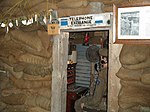Shafia family murders
The Shafia family murders took place on June 30, 2009, in Kingston, Ontario, Canada. Shafia sisters Zainab, 19, Sahar, 17, and Geeti, 13, along with their father's wife Rona Muhammad Omar, 52 (all of Afghan origin), were found dead inside a car that was discovered underwater in front of the northernmost Kingston Mills lock of the Rideau Canal. Zainab, Sahar, and Geeti were daughters of Mohammad Shafia, 58, and his wife, Tooba Mohammad Yahya, 41. The couple also had a son, Hamed, 20, and three other children. Rona, who was herself infertile, was the first wife of Mohammad Shafia in their polygamous household. On July 23, 2009, Mohammad, Tooba Yahya, and Hamed were arrested on charges of four counts of first-degree murder and conspiracy to commit murder under the guise of honour killing. The jury found them guilty of all four counts in January 2012. The trial, which took place at the Frontenac County Court House, was believed to be the first in Canada conducted in four languages – English, French, Dari and Spanish.
Excerpt from the Wikipedia article Shafia family murders (License: CC BY-SA 3.0, Authors).Shafia family murders
Kingston Mills Road, Kingston
Geographical coordinates (GPS) Address Website Nearby Places Show on map
Geographical coordinates (GPS)
| Latitude | Longitude |
|---|---|
| N 44.293014 ° | E -76.441766 ° |
Address
Kingston Mills Blockhouse
Kingston Mills Road 563
K7L 4V3 Kingston
Ontario, Canada
Open on Google Maps




